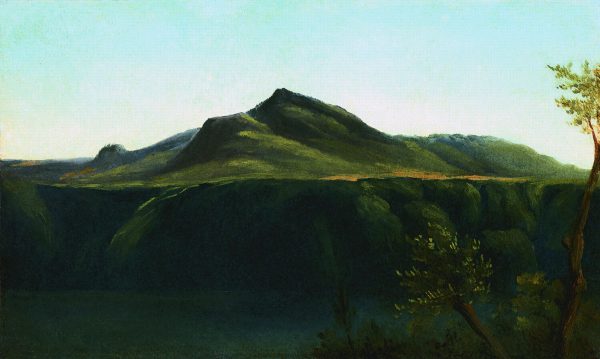View of the Monte Cavo on the Lake of Albano, Ca. 1782-84
Oil on paper laid down on canvas., H. 0.17 m; W. 0.28 m
Provenance: Sale of the artist’s studio, in Paris, 26 April 1819, as a part of lot no. 7
Valenciennes was long regarded as the most distinguished landscape painter of his time, called ‘the David of landscape.’ Trained in Toulouse and then in Paris as a historical painter, he visited Rome in 1777-81, where he devoted much of his time to the study of perspective and landscape. Returning briefly to Paris in 1781, he made the acquaintance of Claude-Joseph Vernet, who in one lesson transformed his understanding of perspective, and of the role of sky and clouds in landscape. Returning to Rome in 1782, Valenciennes began a series of landscape oil studies on paper that today are recognized as landmarks of European art (since 1930, many are in the Louvre). Having returned to Paris by 1785, Valenciennes was made a member of the Academy in 1787, the year he made the first of his regular submissions of historical landscape paintings to the Salon.
In the 1780s he opened a studio where both amateurs and professionals gathered. Not only was Valenciennes a prominent landscape painter in his day; he was also a learned scholar and theoretician of the first order. His 1799/1800 book Elémens de perspective practique greatly influenced future generations of painters. In his book he describes the two ways of envisioning nature: ‘seeing it as it is’ and ‘seeing it as it could be.’ His preference was for the latter, because this method of envisioning possibilities, rather than merely copying, involved letting the imagination work to a greater degree.
